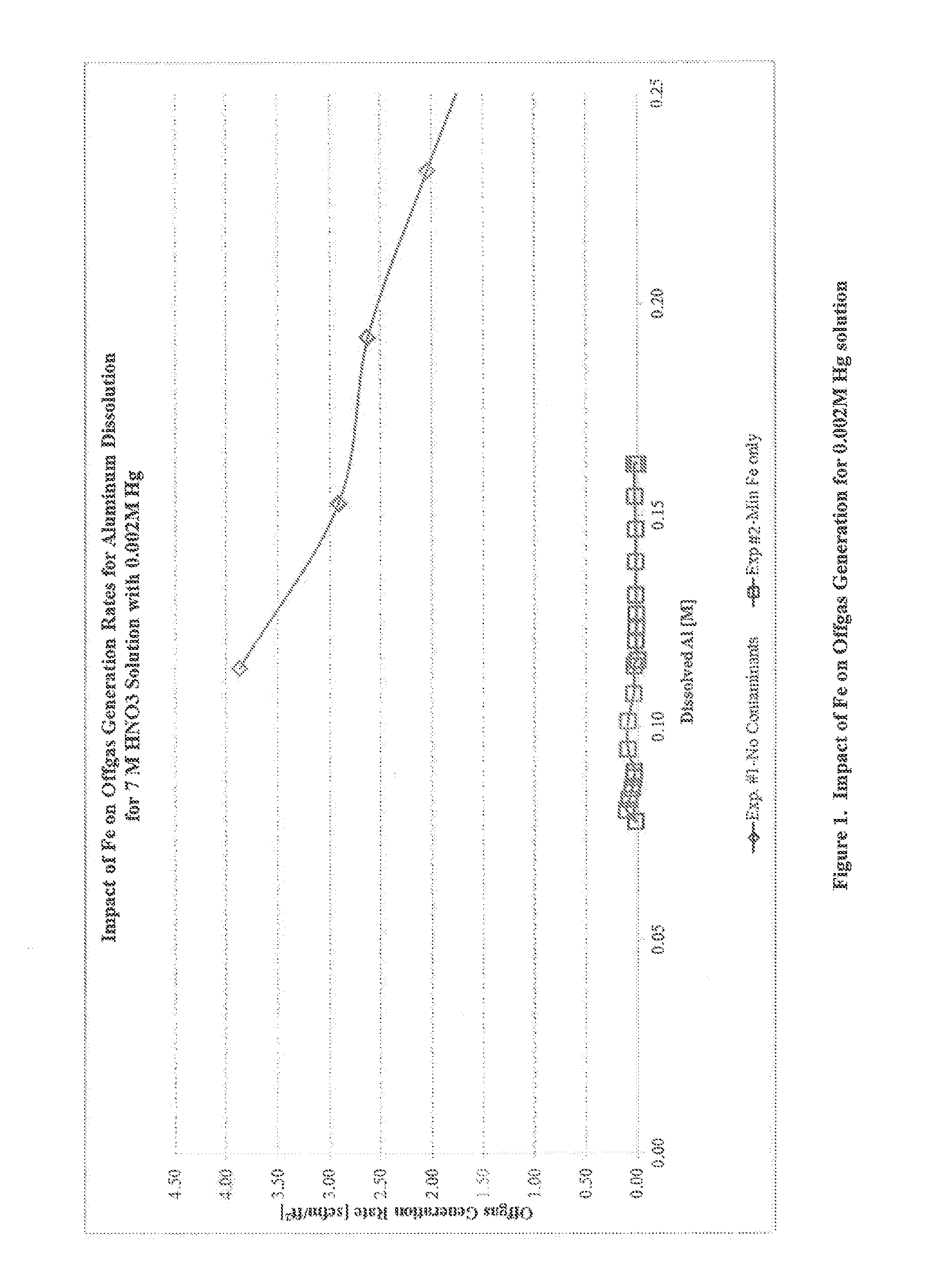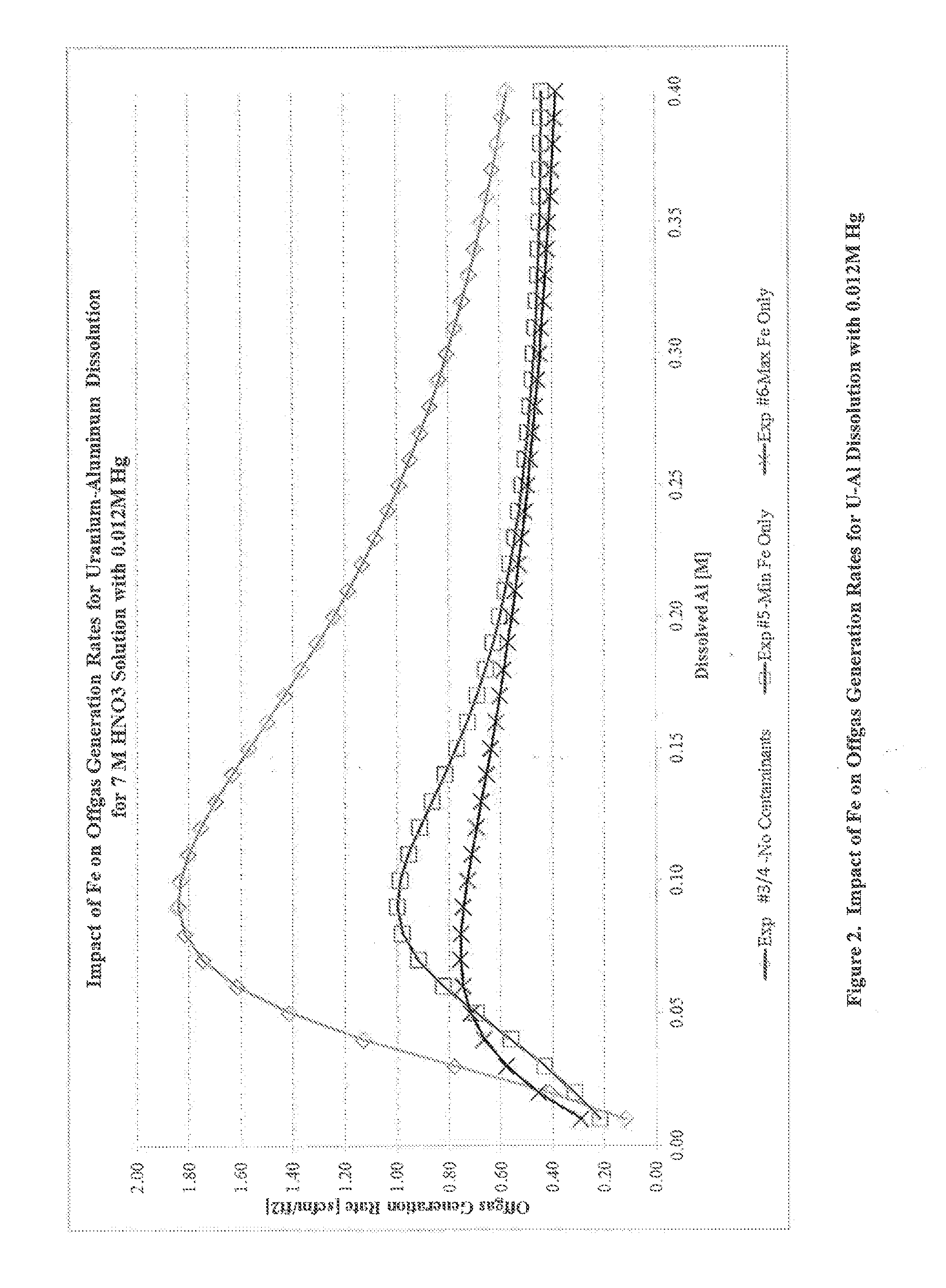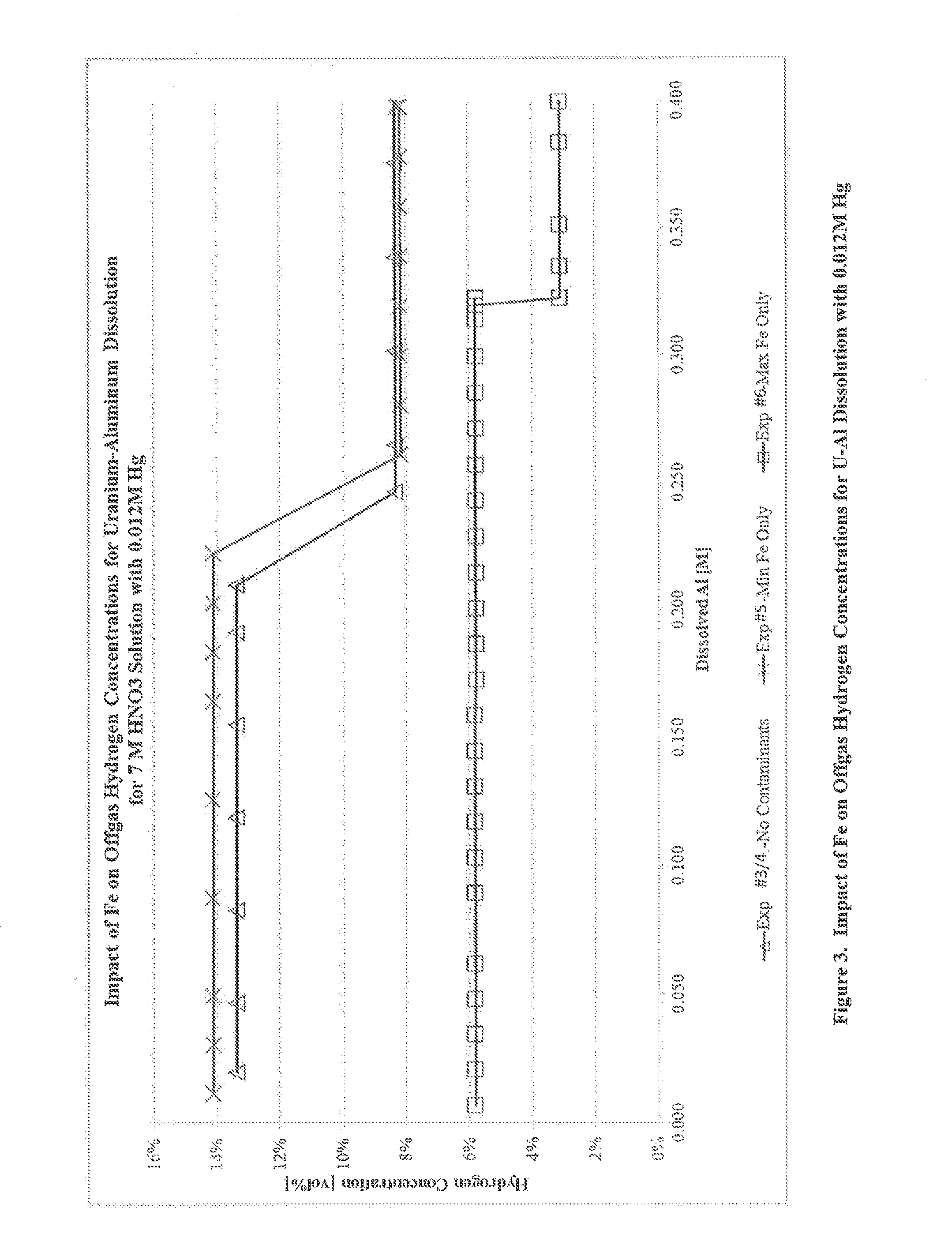Process For Dissolving Aluminum For Recovering Nuclear Fuel
- Summary
- Abstract
- Description
- Claims
- Application Information
AI Technical Summary
Benefits of technology
Problems solved by technology
Method used
Image
Examples
example 1
[0035]Single-impurity scoping experiments to determine the influence of individual contaminants on off-gas rate were initially performed using Al-1100 alloy coupons. A series of four Al-1100 coupons were cut to the approximate dimensions of 19×11×3 mm. A 1 / 16 inch hole was drilled into each coupon in order to fasten each coupon to the glass rods used to lower them into a dissolving nitric acid solution. The coupons were lightly sanded, washed with soap and water, and then weighed and measured. Each coupon weighed approximately 1.7 g and had a surface area of approximately 6 cm2. Each coupon was tied by Teflon™ string through the 1116 inch hole to a glass rod on the dissolver apparatus that was labeled with the coupon position number for coupon identification.
[0036]A dissolver apparatus and off-gas collection system were assembled in a chemical hood. The dissolver apparatus contained a boiling flask with multiple ports, a condenser, an in-line gas sample glass bulb, and a water-subme...
example 2
[0041]Another series of experiments were performed to determine the impact of Fe on off-gas generation rates for uranium-aluminum dissolution at higher concentrations of Hg. A series of four 30 wt % U—Al alloy coupons, cut to 20×12×3 mm with a mass of 1.6-2.1 g, were prepared as described in Example 1.
[0042]Experiment 3 was conducted using a method analogous to that of Example 1 with a dissolving solution of 7 M HNO3, 0.1 M KF, 0.012 M Hg, and no Fe contamination. Hg was initially present in the solution, and the solution was heated to 100° C. before lowering the first coupon. The concentration of hydrogen in the off-gas was measured using gas chromatography.
[0043]Experiment 4 was conducted using a dissolving solution of 7 M HNO3, 0.1 M KF, 0.012 M Hg, and no Fe contamination. Approximately 130 mL of dissolving solution was weighed and added to the dissolver flask containing a Teflon™ stir bar. The solution containing all components except Hg was then heated to 100° C. A syringe pum...
PUM
| Property | Measurement | Unit |
|---|---|---|
| Fraction | aaaaa | aaaaa |
| Fraction | aaaaa | aaaaa |
| Fraction | aaaaa | aaaaa |
Abstract
Description
Claims
Application Information
 Login to View More
Login to View More - R&D
- Intellectual Property
- Life Sciences
- Materials
- Tech Scout
- Unparalleled Data Quality
- Higher Quality Content
- 60% Fewer Hallucinations
Browse by: Latest US Patents, China's latest patents, Technical Efficacy Thesaurus, Application Domain, Technology Topic, Popular Technical Reports.
© 2025 PatSnap. All rights reserved.Legal|Privacy policy|Modern Slavery Act Transparency Statement|Sitemap|About US| Contact US: help@patsnap.com



